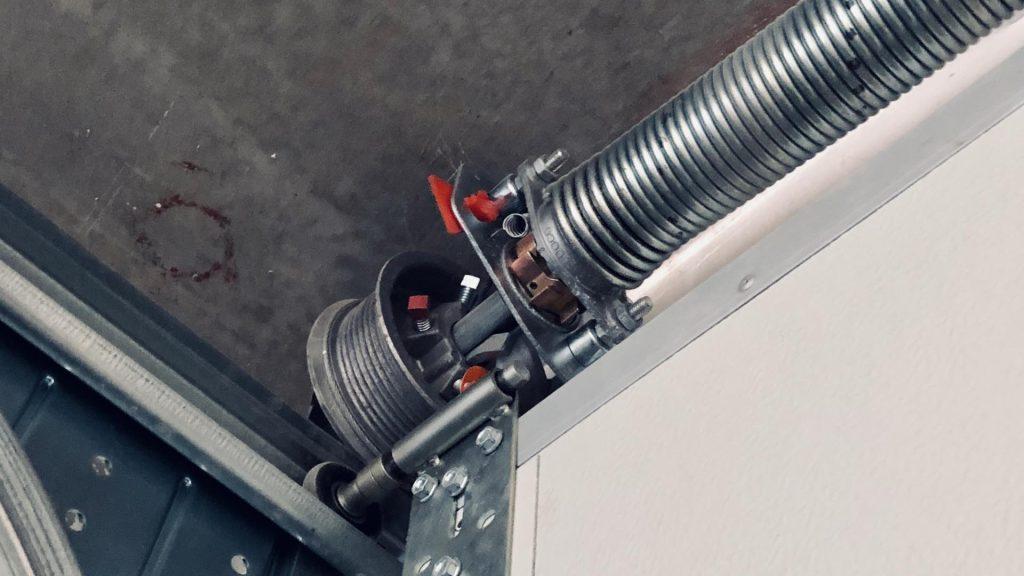Garage door springs are an essential but often overlooked component of your garage door system. They play a crucial role in the smooth operation of the door, whether it’s opening or closing. However, like any mechanical part, garage door springs have a limited lifespan. In this article, we’ll explore the key factors that determine how often garage door springs should be replaced and provide you with valuable insights into spring maintenance and replacement.

Understanding Garage Door Springs
1. Types of Garage Door Springs
Before delving into the replacement frequency, it’s important to understand the two main types of garage door springs:
- Torsion Springs: These springs are mounted horizontally above the garage door. They twist and unwind to counterbalance the door’s weight, making them more durable and commonly used in modern garage doors.
- Extension Springs: Extension springs are typically located on the sides of the garage door, stretching and contracting to assist with lifting and lowering. They are found in older garage door systems.
2. Lifespan of Garage Door Springs
The lifespan of garage door springs varies depending on several factors:
- Usage: The more frequently you open and close your garage door, the shorter the lifespan of the springs. High-usage doors may require replacement sooner.
- Quality: The quality of the springs plays a significant role in their longevity. High-quality springs can last longer than cheaper, lower-quality alternatives.
- Maintenance: Regular maintenance, including lubrication and inspection, can extend the life of your garage door springs.
- Environmental Conditions: Extreme temperatures and humidity levels can affect the lifespan of garage door springs. Harsh conditions may lead to quicker deterioration.
How Often Should Garage Door Springs Be Replaced
1. General Guidelines
There is no one-size-fits-all answer to how often garage door springs should be replaced because various factors come into play. However, a general guideline is that torsion springs have a lifespan of approximately 10,000 cycles, while extension springs may last for around 5,000 cycles. A cycle refers to one full opening and closing of the garage door.
If you use your garage door four times a day (opening and closing it twice), your springs could last around 7 years for torsion springs and 3.5 years for extension springs. Keep in mind that these are approximate figures, and the actual lifespan may vary.
2. Signs That Your Springs Need Replacement
Rather than relying solely on a predetermined timeframe, it’s essential to pay attention to signs that your garage door springs may be nearing the end of their lifespan. These signs include:
- Squeaking or Creaking: If you hear unusual sounds when operating your garage door, it could indicate that the springs need lubrication or replacement.
- Imbalance: A properly functioning garage door should open and close smoothly without uneven movement. If you notice one side of the door sagging or moving slower than the other, it may be a sign of worn-out springs.
- Visible Wear and Tear: Inspect your garage door springs visually. If you see signs of rust, corrosion, or stretching, it’s time to consider replacement.
- Difficulty in Lifting: If your garage door feels heavier than usual to lift manually, the springs may be losing their tension.
Maintenance and Safety
1. Regular Maintenance*
To prolong the lifespan of your garage door springs and ensure their safe operation, regular maintenance is essential. Here are some maintenance tips:
- Lubrication: Apply a silicone-based lubricant to the springs and other moving parts at least once a year to reduce friction and wear.
- Safety Inspection: Perform a visual inspection of your springs, cables, and other components to identify any signs of wear, damage, or misalignment. If you’re unsure about what to look for, consider hiring a professional technician for a thorough inspection.
- Professional Tune-Up: Schedule an annual professional garage door tune-up to address any potential issues and ensure the safe and efficient operation of your entire garage door system.
2. Safety Precautions*
When it comes to garage door spring replacement, safety should be a top priority. Garage door springs are under high tension and can be dangerous to work on without the proper knowledge and equipment. It’s strongly recommended that you hire a trained and experienced technician for spring replacement or any major garage door repairs. Attempting to replace springs yourself can lead to accidents and injuries.
Conclusion
In conclusion, the frequency with which garage door springs should be replaced depends on various factors, including usage, quality, maintenance, and environmental conditions. While there are general guidelines, it’s equally important to pay attention to signs of wear and consider professional inspection and maintenance to ensure the safety and longevity of your garage door springs. Remember that garage door spring replacement is a task best left to professionals for your safety and peace of mind.



Leave a Reply